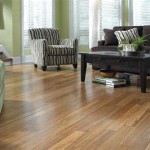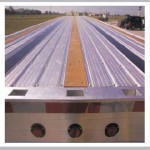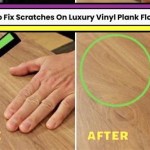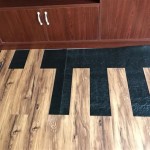Can You Put Vinyl Flooring in Kitchen? A Comprehensive Guide
Vinyl flooring has become an increasingly popular option for kitchen renovations and new builds. Its versatility, durability, and relative affordability make it an attractive alternative to traditional flooring materials like tile, hardwood, and laminate. However, before committing to vinyl flooring for a kitchen, it is critical to understand its potential benefits, drawbacks, and the factors to consider ensuring its suitability for this high-traffic, moisture-prone area.
This article will delve into the specifics of using vinyl flooring in kitchens, exploring its various types, installation methods, performance characteristics, and maintenance requirements. The goal is to provide a comprehensive overview that empowers homeowners and contractors to make informed decisions regarding the selection and implementation of vinyl flooring in a kitchen environment.
The kitchen presents unique challenges for flooring. It is subject to spills, moisture from dishwashing and cooking, heavy foot traffic, and potential impacts from dropped objects. Selecting flooring that can withstand these rigors is essential for longevity and maintaining a visually appealing space. Vinyl flooring offers several advantages in addressing these concerns.
Vinyl flooring is generally water-resistant, and in some cases, completely waterproof. This is a crucial characteristic for a kitchen, where spills are inevitable. Unlike hardwood or laminate, vinyl flooring does not readily absorb water, preventing warping, swelling, and the growth of mold or mildew. This characteristic significantly reduces the risk of water damage and associated health issues. The level of water resistance depends on the type of vinyl flooring chosen. Sheet vinyl, for example, offers excellent water resistance due to its seamless construction. Luxury vinyl plank (LVP) and luxury vinyl tile (LVT) are also highly water-resistant, especially when featuring a waterproof core.
Another significant advantage of vinyl flooring is its durability. High-quality vinyl flooring is designed to withstand heavy foot traffic and resist scratches, dents, and stains. This is especially important in kitchens, which are often high-traffic areas. The wear layer, a protective coating on the surface of the vinyl, plays a critical role in determining its durability. A thicker wear layer provides greater resistance to wear and tear, making it suitable for busy kitchens.
Vinyl flooring also offers ease of maintenance. It is relatively simple to clean and maintain, requiring only regular sweeping or vacuuming and occasional mopping with a mild detergent. This low-maintenance characteristic is appealing to homeowners who want a flooring option that is both aesthetically pleasing and easy to care for. The smooth, non-porous surface of vinyl flooring prevents dirt and grime from becoming deeply embedded, making it easier to keep clean.
Types of Vinyl Flooring Suitable for Kitchens
Several types of vinyl flooring are available, each with its own unique characteristics and suitability for kitchen applications. The primary types include sheet vinyl, luxury vinyl plank (LVP), and luxury vinyl tile (LVT). Understanding the differences between these options is essential in selecting the best choice for a specific kitchen.
Sheet vinyl is a continuous roll of vinyl flooring that is typically installed in large sheets. This type of vinyl flooring is known for its excellent water resistance due to its seamless construction. It is a cost-effective option and is available in a wide range of colors and patterns. However, sheet vinyl can be more challenging to install than other types of vinyl flooring, requiring precise measurements and specialized tools. Any imperfections in the subfloor can also be more noticeable with sheet vinyl.
Luxury vinyl plank (LVP) is designed to mimic the look of hardwood flooring. It comes in individual planks that are typically installed using a click-lock system or with adhesive. LVP is generally more durable and water-resistant than laminate flooring and offers a realistic wood-grain appearance. Its plank format allows for easier installation compared to sheet vinyl, and individual damaged planks can be replaced without replacing the entire floor. LVP offers a good balance of aesthetics, durability, and ease of installation, making it a popular choice for kitchens.
Luxury vinyl tile (LVT) is designed to mimic the look of ceramic tile, stone, or other natural materials. It comes in individual tiles that are installed using a click-lock system or with adhesive. LVT offers similar benefits to LVP in terms of durability, water resistance, and ease of installation. It is available in a wide variety of sizes, shapes, and patterns, allowing for creative design possibilities. Like LVP, damaged tiles can be replaced individually, minimizing the cost and disruption of repairs.
Factors to Consider Before Installing Vinyl Flooring in a Kitchen
Before installing vinyl flooring in a kitchen, several factors must be considered to ensure a successful and long-lasting installation. These factors include the condition of the subfloor, the type of vinyl flooring selected, the installation method, and the potential for moisture exposure.
The condition of the subfloor is critical for a successful vinyl flooring installation. The subfloor must be clean, level, and dry. Any imperfections in the subfloor, such as cracks, holes, or unevenness, must be addressed before installing the vinyl flooring. Unevenness in the subfloor can cause the vinyl flooring to flex and potentially crack or tear over time. Moisture in the subfloor can also lead to problems, such as mold growth and adhesive failure. A moisture test should be conducted prior to installation to ensure that the subfloor is adequately dry.
The choice of vinyl flooring should be based on the specific needs and preferences of the homeowner. Factors to consider include the desired appearance, durability requirements, budget, and installation method. For kitchens with high moisture exposure, a waterproof vinyl flooring option, such as sheet vinyl or LVP/LVT with a waterproof core, is recommended. For kitchens with heavy foot traffic, a vinyl flooring with a thicker wear layer is advisable. The overall design aesthetic of the kitchen should also be considered when selecting the color, pattern, and texture of the vinyl flooring.
The installation method is another important consideration. Sheet vinyl typically requires professional installation due to its size and the need for precise measurements and seaming. LVP and LVT can be installed as a DIY project, especially those with click-lock systems, but professional installation is recommended for best results. Proper installation techniques are essential to ensure that the vinyl flooring is securely attached to the subfloor and that seams are properly sealed. Incorrect installation can lead to problems such as bubbling, lifting, and water damage.
Moisture exposure is a significant concern in kitchens. While vinyl flooring is generally water-resistant, it is important to take steps to minimize moisture exposure. This includes promptly cleaning up spills, ensuring adequate ventilation, and addressing any plumbing leaks. The use of a vapor barrier beneath the vinyl flooring can also help to prevent moisture from seeping up from the subfloor. In areas with high moisture exposure, such as around the dishwasher or sink, consider using a waterproof sealant to protect the edges of the vinyl flooring.
Maintenance and Care of Vinyl Flooring in a Kitchen
Proper maintenance and care are essential to prolong the life of vinyl flooring in a kitchen and maintain its appearance. Regular cleaning, protective measures, and prompt attention to spills and damage are key to keeping vinyl flooring in good condition.
Regular cleaning is essential for maintaining the appearance of vinyl flooring. The floor should be swept or vacuumed regularly to remove dirt, dust, and debris. Spills should be cleaned up immediately to prevent staining. For general cleaning, a mild detergent and warm water solution can be used. Avoid using abrasive cleaners, harsh chemicals, or scouring pads, as these can damage the surface of the vinyl flooring. A damp mop should be used to clean the floor, and care should be taken to avoid excessive water exposure. The floor should be allowed to air dry completely after cleaning.
Protective measures can help to prevent damage to vinyl flooring. The use of mats or rugs in high-traffic areas, such as near the sink or stove, can help to protect the floor from scratches and spills. Furniture legs should be fitted with protective pads to prevent scratching and denting. Avoid dragging heavy objects across the floor, as this can also cause damage. In areas with direct sunlight, consider using window coverings to protect the vinyl flooring from fading.
Prompt attention to spills and damage is crucial to preventing long-term problems. Spills should be cleaned up immediately using a clean cloth or paper towel. For stubborn stains, a specialized vinyl flooring cleaner may be necessary. Minor scratches can often be repaired using a vinyl flooring repair kit. More significant damage, such as tears or gouges, may require professional repair or replacement. Addressing damage promptly can prevent it from worsening and extending the life of the vinyl flooring.
Choosing the appropriate vinyl flooring for a kitchen involves careful consideration of the specific requirements of the space, the type of vinyl available, and meticulous installation and maintenance practices. While vinyl offers a compelling blend of practicality and aesthetic appeal, understanding its limitations and implementing proper safeguards is vital for ensuring its long-term performance in this demanding environment.

How To Choose Best Vinyl Flooring For Kitchen Scv Floorsmith
What Is The Best Flooring For A Kitchen Tarkett

Tips For Installing A Kitchen Vinyl Tile Floor Merrypad

How To Lay Vinyl Flooring Kitchen Makeover Sandhya S

Why Vinyl Flooring Is The Perfect Choice For Your Kitchen

Can You Install Vinyl Flooring In The Kitchen Singapore

Is Vinyl Flooring The Best Choice For Kitchens

Lvt Flooring Over Existing Tile The Easy Way Vinyl Floor Installation Diy

Can You Put A Refrigerator Or Heavy Furniture On Vinyl Plank Flooring

How To Install Vinyl Plank Flooring Lowe S








